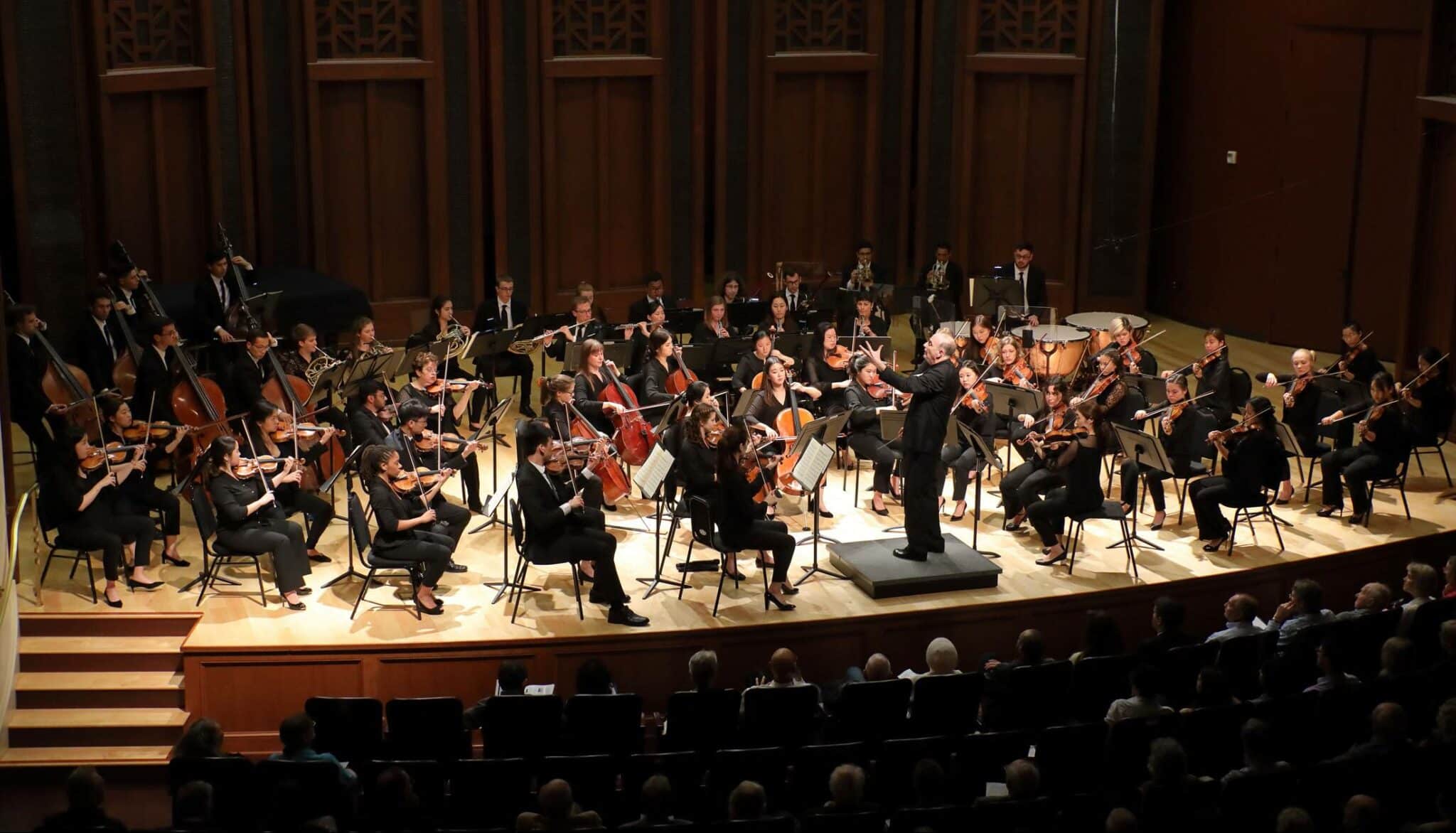Imagine a typical summer at Music Academy of the West. As expected, the sounds of music are almost inescapable. Perhaps a vocal masterclass in Hahn Hall features a young singer performing an operatic aria or maybe a bassoonist plays a sonata in Lehmann Hall. The sounds of lessons drift outward from faculty teaching studios in Claeyssens and Hind Halls. The public attending events and wandering the campus are treated to all of this, the beautiful, overlapping not-quite-a-cacophony that perhaps more than anything else represents the invigorating busyness of the Summer School and Festival.
Beneath it all, though, there’s another sound. Although it might later, at this moment it isn’t coming from the stages, nor from the studios. Maybe there’s a small ensemble rehearsing in Yzurdiaga Hall, but it isn’t coming from there, either. It’s coming from the lower floor of the Luria Education Center or from a U-shaped hallway in the Lehrer Studio Building adjacent to Hind. Or maybe it comes from the Baja Studios, whose blink-and-you’ll-miss-it entrance is off a pathway behind the Marilyn Horne Main House. These areas, none of them frequented by the public, all house practice rooms. The sound doesn’t drift so much as it pierces, forcefully making itself known. A trombonist plays the famous “Ride of the Valkyries” from Wagner’s Die Walküre. Maybe you know it from the opera, maybe you know it from Apocalypse Now, or maybe you know it from countless other uses in popular culture, but the point is you know it. After they finish there’s a brief pause, followed by the click of a metronome. They play it again. The metronome stops. They play it again. And again. And again…
It takes a lot to win an orchestral audition. It takes years of dedication, study, and patience, countless hours spent in a practice room obsessing over technique, tone, intonation, rhythm, and other minute details. It also takes an immense, intense, and nearly instinctive knowledge of orchestral excerpts. Orchestral excerpts are short segments of frequently played symphonic repertoire, and for those who play orchestral instruments they make up the bulk of the required audition materials for conservatories, festivals, and orchestras. Although there is sometimes overlap, each instrument’s standard excerpts are unique, taken from important (or difficult) moments that feature the respective instruments. Besides “Ride of the Valkyries,” for example, trombonists are expected to know the famous solos from Ravel’s Bolero and Mozart’s Requiem, just to name a couple. For violists the list includes sections of Beethoven’s Fifth Symphony and Mendelssohn’s A Midsummer Night’s Dream; for horn players excerpts from Beethoven’s Third and Strauss’s Till Eulenspiegel.
The lists, too long to adequately name here, are a major part of any aspiring orchestral musician’s training. People toil at these musical snapshots for years, focusing on—obsessing over—each little nuance. Is every note in tune? Does the tempo waver? Is the rhythm perfect? There is no conductor here to hold in check any tendencies to rush or drag the beat, no other musicians to reference for tuning. It is a very exposed endeavor.
During yesterday’s Fast Pitch Competition, oboist Lauren Keating, whose project was a comprehensive orchestral excerpt book for the oboe, described working on excerpts as being similar to the way elite athletes practice. This is an apt comparison. Like athletic drills, preparing orchestral excerpts is an exercise in pure technique. In many ways the drills are sterile exercises. They are removed from the passion of the game and often involve just a few players. They strip away the complications of real-life competition in order to focus on the execution of minor details. The idea is that countless repetition will make these details automatic and increase the chances of success during an actual game.

It is the same with orchestral excerpts. An orchestral audition committee is likely to hear hours’ and hours’ worth of auditions for one open spot. What they expect is absolute perfection. The auditionee’s knowledge of the excerpt must be such that their execution is automatic. Faced with dozens of high-quality candidates, the committee is looking for any excuse not to advance someone. This is why that trombonist plays “Ride of the Valkyries” again and again. This is why musicians record themselves playing excerpts and painstakingly scrutinize the results. This is where years of intense focus in the practice room pays off.
The twelve fellows recently selected to participate in the London Symphony Orchestra (LSO) Keston MAX Exchange Program know all about this process. In order to be considered for the Music Academy’s signature partnership with the LSO, fellows must first go through an audition process judged by Academy faculty. The selected finalists then audition for members of the LSO, who have the final say in which fellows are invited to London. The audition is set up exactly like a regular orchestral audition, meaning most of the repertoire consists of excerpts. Oh, and once they get to London for the ten-day program? One of their activities is a mock audition. You can never have enough practice.
Orchestral excerpts aren’t the fun part for a concertgoer any more than watching an NFL team practice is the fun part for most football fans, and there is much more to being a great musician than being able to perfectly execute these snippets of the repertoire. Nevertheless, they are an integral part of a laborious process that begins in the practice room and ends in the concert hall. The next time you listen to an orchestra perform, think about the incredible amount of time and practice behind the product. The best orchestras can make what they do seem almost effortless; in reality, the effort required to give that impression is difficult to fathom. Just ask that theoretical trombonist. She’s out there somewhere—probably still practicing “Ride of the Valkyries.”
– Henry Michaels
Resonance editor, Audience Services and Community Access Manager, Music Academy of the West


